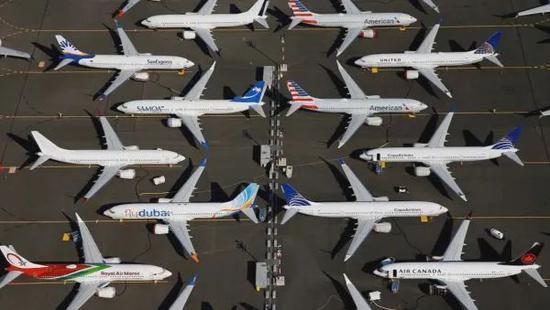Figaro published a report entitled “Boeing 737MAX, an unprecedented disaster of industrial and personnel losses”. The full text is excerpted as follows:
The MAX is the fourth model of the Boeing 737, which has been in operation since 1968. It will remain the symbol of the biggest industrial disaster in aviation history. To measure the scale of the disaster, look back.
At the end of January 2019, Dennis Millenberg, the 10th CEO since Boeing was founded in 1916, also announced the best performance in Boeing history. In 2018, Boeing’s turnover exceeded the $100 billion mark, and its $220 billion market value approached the high-tech giant GAFA (Google, Amazon, Facebook and Apple). Millenberg, 55, was named “People of the Year” by Aviation Weekly, which made the entire aviation industry envious.
At that time, no one talked about the Lion Air flight incident. On October 28, 2018, a Boeing 737MAX passenger plane of Lion Air Indonesia crashed into the sea 13 minutes after taking off from Jakarta, killing 189 passengers. This incident initially made headlines, but later few people mentioned it. However, five months later, everything was overturned. On March 10, 2019, an Ethiopian Airlines Boeing 737MAX crashed six minutes after taking off from Addis Ababa Airport, killing 157 passengers on board. A few days later, the global aviation industry closed its doors to the Boeing 737MAX.
After the Egyptian Airlines crash, Boeing fell into a no-flying nightmare, and the MAX model’s maneuverability enhancement system (MCAS) was considered to be the culprit of the air crash. Many pilots, especially American pilots, said that they had encountered major problems with the stability of the aircraft, which would cause trouble in the take-off phase. Many observers believe that the Boeing 737 has gone ahead in automation.
The victims’ families went to court, and the U.S. Congress and the FBI launched an investigation. According to the estimates of Oxford Economic Consulting, the Boeing 737MAX crisis may reduce the growth rate of GDP in the United States by 0.5 percentage points. Analysts mentioned that only 25% of Boeing’s manufacturing business is in the United States and 75% overseas. Under pressure of the flight ban, Boeing initially had to cut its production capacity of the 737MAX by 20%, and completely stopped production by the end of 2019, and suspended aircraft delivery in mid-March this year. The impact spread to more than 900 partners of this model.
The problem ultimately boils down to the research and development and approval of MCAS, and the Federal Aviation Administration has also been the subject of investigation, because it subcontracted part of its regulatory business to Boeing. Boeing has also been urged to correct the problems of the aircraft, focusing on developing a new generation of MCAS systems and training plans.
Boeing has no way back. Just before Christmas 2019, Millenberg was forced to resign. On January 13, 2020, David Calhoun, 62, became CEO.
In January this year, Boeing suffered its first loss in 22 years, and the 737MAX crisis was one of the main reasons. Boeing made another $10.5 billion last year, but lost $636 million in the first quarter of this year. The damage caused by MAX is as high as $18 billion, of which $5.6 billion is compensated to airlines. These airlines were forced to cancel thousands of flights and seek alternatives. Due to grounding, undeliverable, and the development of new MCAS systems and related compensation, 737MAX has become a deep pit.
Since last winter, Boeing has also been hit by the coronavirus epidemic. However, things are changing. At the end of May this year, Boeing announced the gradual resumption of MAX production capacity. In July, Boeing reached an agreement with 90% of the victims’ family lawsuits.
Ultimately, the Boeing 737MAX may return to the sky in 18 months. However, Boeing will have to turn over the darkest page in history for many years.



